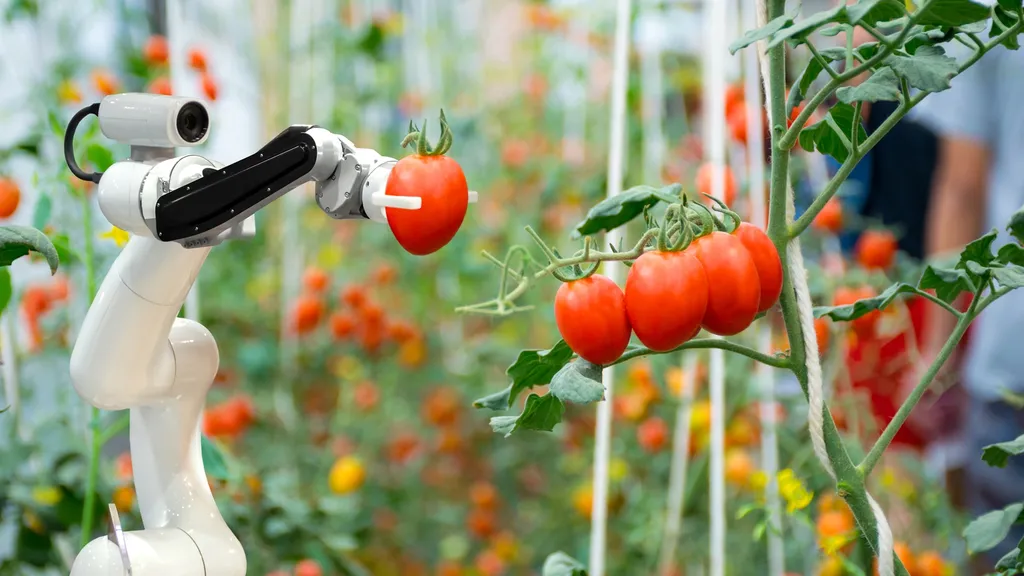In the heart of Hungary, researchers are pioneering a technological revolution that could reshape the future of tomato cultivation and, by extension, the broader agricultural industry. Led by L. Moldvai from the Department of Biosystems Engineering and Precision Technology at Széchenyi István University, a comprehensive review of recent advancements in machine vision for tomato cultivation has been published in the journal ‘Discover Applied Sciences’ (which translates to ‘Discover Applied Sciences’ in English). This work is not just about tomatoes; it’s about harnessing the power of artificial intelligence to create more efficient, sustainable, and profitable farming practices.
The study delves into the integration of cognitive technologies in agriculture, particularly focusing on tomato production. “We’ve seen a significant surge in research interest in machine vision, deep learning, and artificial intelligence within precision agriculture,” Moldvai explains. “Our goal was to provide a thorough analysis of the image processing algorithms utilized in recent research and their outcomes.”
The review covers a wide range of applications, from supporting tomato harvesting—including classification, fruit counting, and yield estimation—to plant health monitoring. This includes detecting weeds, pests, leaf diseases, and fruit disorders. The research also explores the latest developments in vehicle navigation systems and tomato-harvesting robots, areas that hold immense potential for commercial impact.
One of the most compelling aspects of this research is its potential to transform the energy sector within agriculture. Precision agriculture, powered by machine vision and AI, can lead to more efficient use of resources, reducing energy consumption and environmental impact. “By optimizing the cultivation process, we can significantly cut down on water, fertilizer, and energy use,” Moldvai notes. “This not only makes farming more sustainable but also more cost-effective in the long run.”
The study highlights the use of advanced technologies like convolutional neural networks (CNN) and vision transformers (ViT). These tools enable more accurate and efficient monitoring and management of tomato crops, leading to higher yields and better quality produce. The commercial implications are vast, as these technologies can be scaled and adapted to various crops and farming practices.
As we look to the future, the research conducted by Moldvai and his team could pave the way for a new era in agriculture. The integration of machine vision and AI in farming practices holds the promise of increased productivity, sustainability, and profitability. “This is just the beginning,” Moldvai says. “The potential for these technologies is enormous, and we’re excited to see how they will continue to evolve and impact the agricultural industry.”
In a world grappling with the challenges of climate change and resource depletion, the work of Moldvai and his colleagues offers a beacon of hope. By leveraging the power of technology, we can create a more sustainable and efficient agricultural system, one that benefits both farmers and consumers alike. The journey towards this future has begun, and the possibilities are endless.

